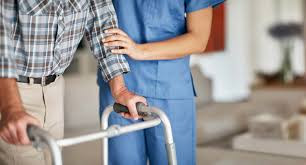Definition
Essential tremor is a neurological disorder characterized by involuntary shaking movements, most notably in the hands during daily activities like drinking or tying shoelaces.
Essential tremor is generally not a dangerous condition, but it can worsen and interfere with daily activities. It usually occurs in individuals over the age of 40 and is the most common postural neurological complaint, affecting 5% of the global population.
Causes
The cause of essential tremor is thought to be genetic mutations, making it an inherited condition. The cause in individuals without a family history of tremor is still unknown.
Some experts believe essential tremor is caused by disturbances in the brainstem and cerebellum, though this hypothesis is still debated. However, some agree that essential tremor is a risk factor for developing Parkinson's disease in the future.
Risk factor
Known risk factors that increase the likelihood of experiencing essential tremors include:
- Genetic Mutation: Familial tremor is an inherited condition caused by genetic abnormalities from parents. If your parents have essential tremor, you have a 50% chance of developing it.
- Age: Essential tremor is more common in individuals over the age of 40.
Symptoms
Symptoms of essential tremor include:
- Repetitive shaking movements, usually starting on one side of the body
- Worsening with activity
- Often noticeable in one or both hands
- Exacerbated by stress, fatigue, caffeine, or extreme temperatures
Parkinson's disease can also present with tremor symptoms, so it's essential to distinguish it from essential tremor.
- Essential tremor is noticeable during activity, while Parkinson's tremor occurs when the hands are at rest.
- Essential tremor is not associated with other symptoms, whereas Parkinson's tremor is accompanied by other characteristic symptoms such as small steps, slow body movements, and difficulty maintaining certain postures.
- Essential tremor typically involves the hands, head, and voice, while Parkinson's tremor starts in the hands and can affect the legs, chin, and other body parts.
Diagnosis
To diagnose essential tremor, your doctor will need to rule out other causes of tremor, such as:
- Medications like albuterol, corticosteroids, cyclosporine, lithium, long-term alcohol use, and antiarrhythmics
- Parkinson's disease
- Stroke
- Low blood sugar
- Thyroid disorders
- Drug withdrawal
- Electrolyte imbalances
- Multiple sclerosis
Your doctor will inquire about your tremor, and family history, and perform a physical examination to identify any accompanying symptoms. Neurological exams, including tests for reflexes, muscle strength, muscle tone, sensation, coordination, and gait, can help assess your current nerve function. According to the Movement Disorder Society, essential tremor diagnosis criteria include:
- Bilateral (both sides) tremor, symmetrical, and position-dependent
- Tremor involving the hands and forearms
- Persistent and visible tremor
- Associated with isolated head tremor
There are no specific tests to diagnose essential tremors, but additional tests can rule out other medical conditions causing tremors. Thyroid, metabolic, and medication side-effect tests can help identify the cause of tremor.
Performance evaluations, such as assessing your ability to drink, write, and draw, can determine the severity of the tremor.
Management
Medical therapy
There is no cure for essential tremors, but several treatments can help reduce symptoms.
If the tremor is mild, your doctor may not prescribe medication. However, if the tremor interferes with daily activities, medications such as beta-blockers, anticonvulsants, and botox injections may be prescribed. Discuss these treatment options, along with their benefits and side effects, with your doctor.
For some patients, adding weight to the arms can reduce tremors. Medications causing tremor should be discontinued under medical supervision.
For patients unresponsive to medication, surgical options such as deep brain stimulation (DBS), focused ultrasound, and gamma knife thalamotomy can reduce tremor.
Self-care at home
To reduce tremors, consider the following:
- Avoid caffeine: Caffeine and other stimulants can cause or worsen tremor.
- Relaxation techniques: Stress or anxiety can trigger tremors, so relaxation techniques can help control it. If you cannot reduce stressors and anxiety, learn relaxation techniques like massage or meditation.
- Lifestyle changes: Use the less affected hand more often. Use voice-recognition features on your phone to help with daily activities that are difficult due to tremors. Ensure adequate sleep and rest, as fatigue can trigger tremors.
- Weight training: Light weight training can help reduce tremors and regain hand control. If you don't have weights, use a heavy watch or bracelet to add slight weight to your hands.
- Educate yourself about essential tremors: It can hinder daily activities, so read reliable information about the condition. Consult your doctor to formulate exercises that can reduce tremors. Use cloth or tissue to prevent spilling food.
Complications
Essential tremors are not life-threatening but can interfere with daily activities. It can worsen with age, making it difficult to hold a cup, eat, apply makeup, speak (if the tongue and vocal cords are affected), and write.
Prevention
Since the exact cause of essential tremor is unknown, there are no recommended steps to prevent it. However, avoiding factors that can exacerbate essential tremors, such as stress and excessive caffeine consumption, can help.
When to see a doctor?
Consult a doctor if you experience tremor and want to confirm the diagnosis. Further examination can help your doctor determine the type of tremor you have. If you experience tremors in your legs, accompanied by unstable posture, stiffness, and small steps, seek immediate medical attention.
Looking for more information about other diseases? Click here!
- dr Nadia Opmalina
Cleveland Clinic Staff. (2019). Essential Tremor. Cleveland Clinic. Available from: https://my.clevelandclinic.org/health/diseases/11886-essential-tremor
Agarwal S, Biagioni MC. Essential Tremor. [Updated 2021 Jul 12]. In: StatPearls [Internet]. Treasure Island (FL): StatPearls Publishing; 2021 Jan-. Available from: https://www.ncbi.nlm.nih.gov/books/NBK499986/
Mayo Clinic Staff. (2019). Essential Tremor. MayoClinic. Available from: https://www.mayoclinic.org/diseases-conditions/essential-tremor/diagnosis-treatment/drc-20350539
Melinosky C. (2020). The brain and essential tremor. WebMD. Available from: https://www.webmd.com/brain/essential-tremor-basics
Harvard Health Publishing. (2019). Essential tremor and how to manage it. Health Harvard Edu. Available from: https://www.health.harvard.edu/newsletter_article/essential-tremor-and-how-to-manage-it












